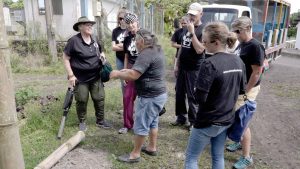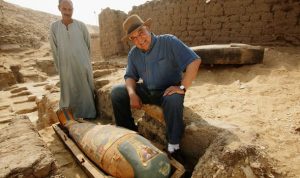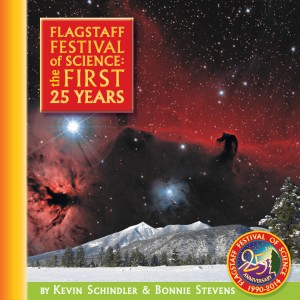Rodents threatening survival of species and farms.
Now, a Northern Arizona organization is working to help protect the islands from an invasive rat population that is threatening not only many of the endemic species of the Galapagos, but also the farms that are vital to the islands’ 40,000 human inhabitants.
Women in Science Doing Outreach and Mentoring (WISDOM) LLC, co-founded by Flagstaff scientists Dr. Loretta Mayer and Dr. Cheryl Dyer, is providing fertility-control technology to The Galapagos Project (galapagosproject.org), a two-year initiative aimed at restoring ecological balance humanely and without the use of poisons. Among the Galapagos sponsors is the Arizona-based Ramsey Social Justice Foundation, which provides grants and financial assistance to underrepresented communities.
The project is a collaboration between WISDOM; Animal Balance, an international animal welfare NGO; and the Agencia de Bioseguridad Galápagos (ABG), which oversees the archipelago.
“Animal Balance has been working in the region for years, providing consistent spay and neuter clinics, dog training classes and workshops on caring for animals,” said Mayer. “What WISDOM is bringing is a protocol for disbursing oral contraceptives to rodents, to reduce the population without poison.”
Mayer and Emma Clifford, who founded Animal Balance in 2004, have admired each other’s work for years. They first met in 2003 at the first conference of Alliance for Contraception in Cats & Dogs, where Mayer was presenting early findings on the potential for a non-surgical spay approach for dogs and Clifford was preparing to go to the Galapagos to spay and neuter dogs and cats.
As Clifford recalled: “I wanted to use non-surgical means to kindly manage the rats, cats and dogs of the Galapagos, but I was 19 years too early.”
Mayer and a team of WISDOM scientists and researchers recently returned from Isabela Island in the Galapagos, where they confirmed that the rodents – rattus rattus (known as the black rat) and mus musculus (the house mouse), would eat the pellets containing the fertility-control technology from feeding stations placed around farms on the islands.
Most of the feeding stations were made of biodegradable paperboard, selected to not add to the waste-stream of the islands. Two, however, were wood feeding stations constructed by Sinagua Middle School students, who built them in shop class. The Sinagua boxes were tested in the field as a culmination of WISDOM’s partnership with Sinagua Woodshop teacher Amy Dries and the Flagstaff Festival of Science.
“The most important thing is that we accomplished our mission to establish a research beachhead with Animal Balance to collect the data to allow us to lay out the two-year plan in a research protocol,” said Mayer.
The trip also allowed the scientists and researchers to meet and learn from government officials, local farmers and community members, building on relationships that Animal Balance has cultivated for decades. This includes working closely with the ABG. The agency – part of the Ecuadorian Ministry of the Environment – is charged with the biosafety of the islands and reducing the risk of any invasive species that endanger the biodiversity of the islands, the local economy and human health.
If successful, the project will bring greater ecological balance to the Galapagos, benefiting both that biodiversity and the residents of the islands, and also inform better balance solutions for islands worldwide.
Rattus rattus was accidentally introduced into the Galapagos by pirates and whalers in the 17th and 18th centuries. The consequences were devastating; over time the rodent population has resulted in the near extinction of certain endemic species.
Among the creatures threatened by the rat overpopulation are the rare pink land iguana and the giant tortoises of the islands. Rats will dig into the nests of these animals and eat the eggs and hatchlings.
Meanwhile, the rats also feast on local farm goods, which are essential to the residents of the islands. While there is a monthly container ship from mainland Ecuador that provides some foodstuffs, the pandemic showed that relying on these ships is not sustainable. Residents need the produce produced by local farms to survive, and rats are destroying these crops.
The reception of the WISDOM and Animal Balance teams on this project went very well, according to Jessica Gonzalez, who is the program director for Animal Balance in the Galapagos.
“This project brings together science and the community with the support of local authorities in perfect synchrony to implement an effective and sustainable solution for the control of non-endemic rodent populations, which Galapagos deserves,” she said. “I am convinced that we are marking an important milestone in the conservation of the Enchanted Islands.”
The team from WISDOM plans to return to the archipelago later this year. QCBN
By Cindy May, QCBN








